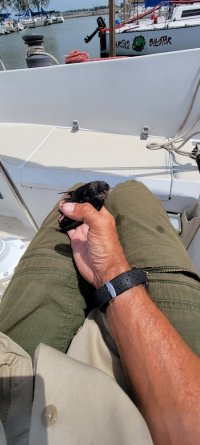Many sailboats will lose rudder 'grip' on the water at steeper heel angles, and then there is the change in water plane that happens. Rounding up or even an unplanned tack can result from a puff that puts the rail under. I agree that 15 degrees is a good practical max.
Aside: a lot of newer designs with a huge and wide stern section - giving a large "bedroom" aft - have had to go to twin rudders in order to restore control to the boat that was badly compromised by the hull shape that helped sell those hulls to non sailors. And then, the builders used a bucket of marketing dollars to bamboozle buyers into believing that the resulting expensive rudder system made the design superior to earlier sailing designs. (sigh...)
Aside: a lot of newer designs with a huge and wide stern section - giving a large "bedroom" aft - have had to go to twin rudders in order to restore control to the boat that was badly compromised by the hull shape that helped sell those hulls to non sailors. And then, the builders used a bucket of marketing dollars to bamboozle buyers into believing that the resulting expensive rudder system made the design superior to earlier sailing designs. (sigh...)


